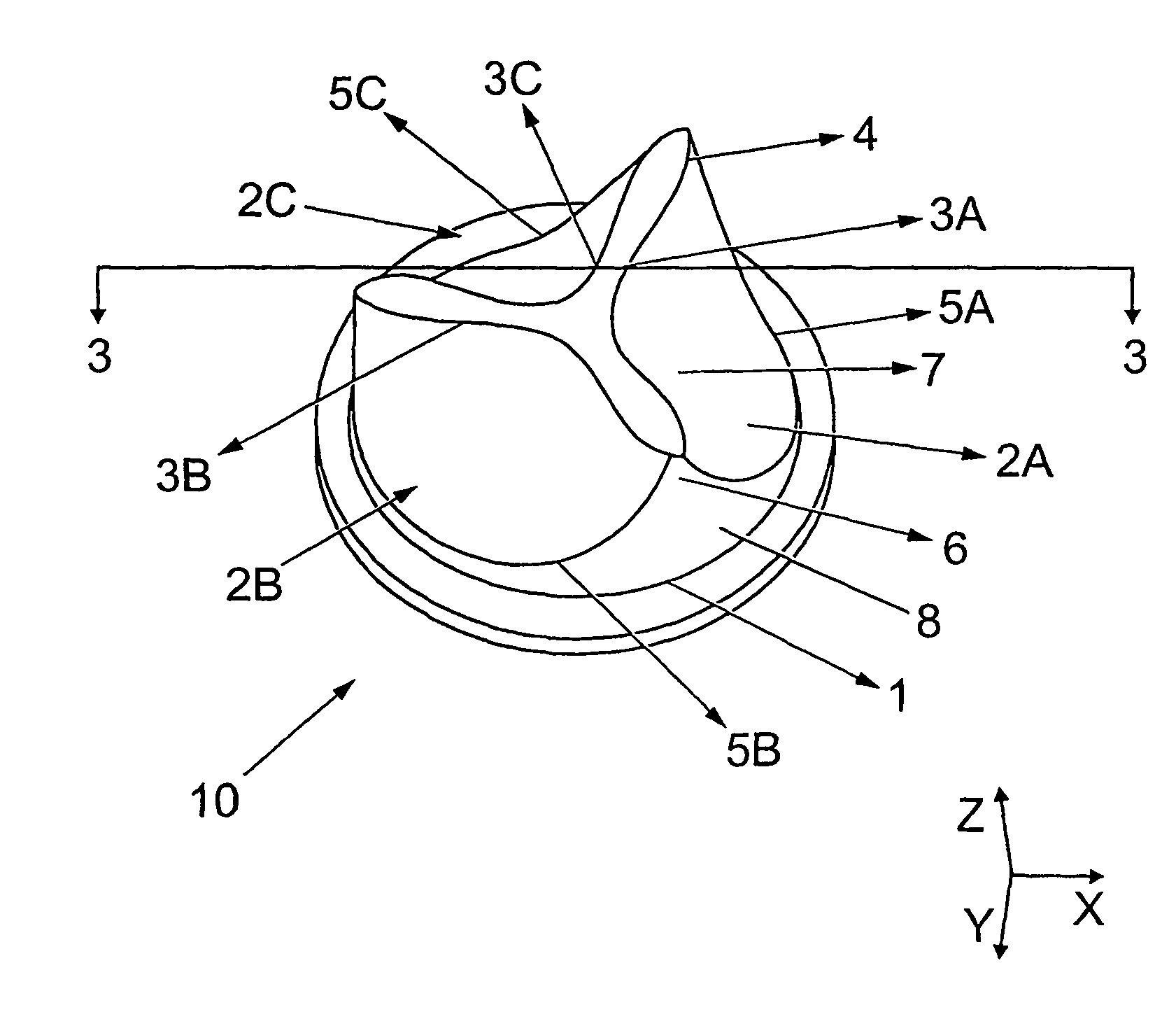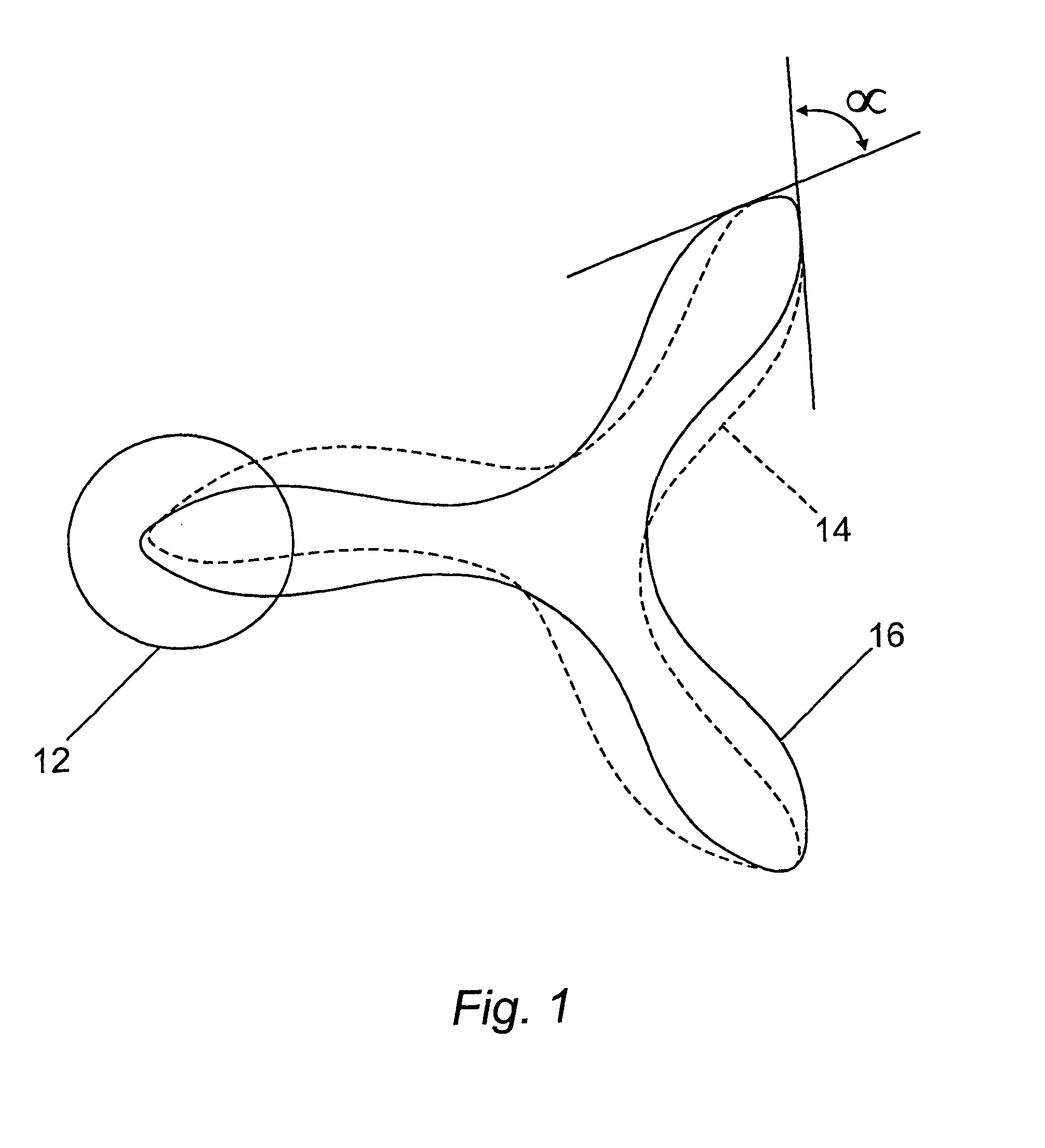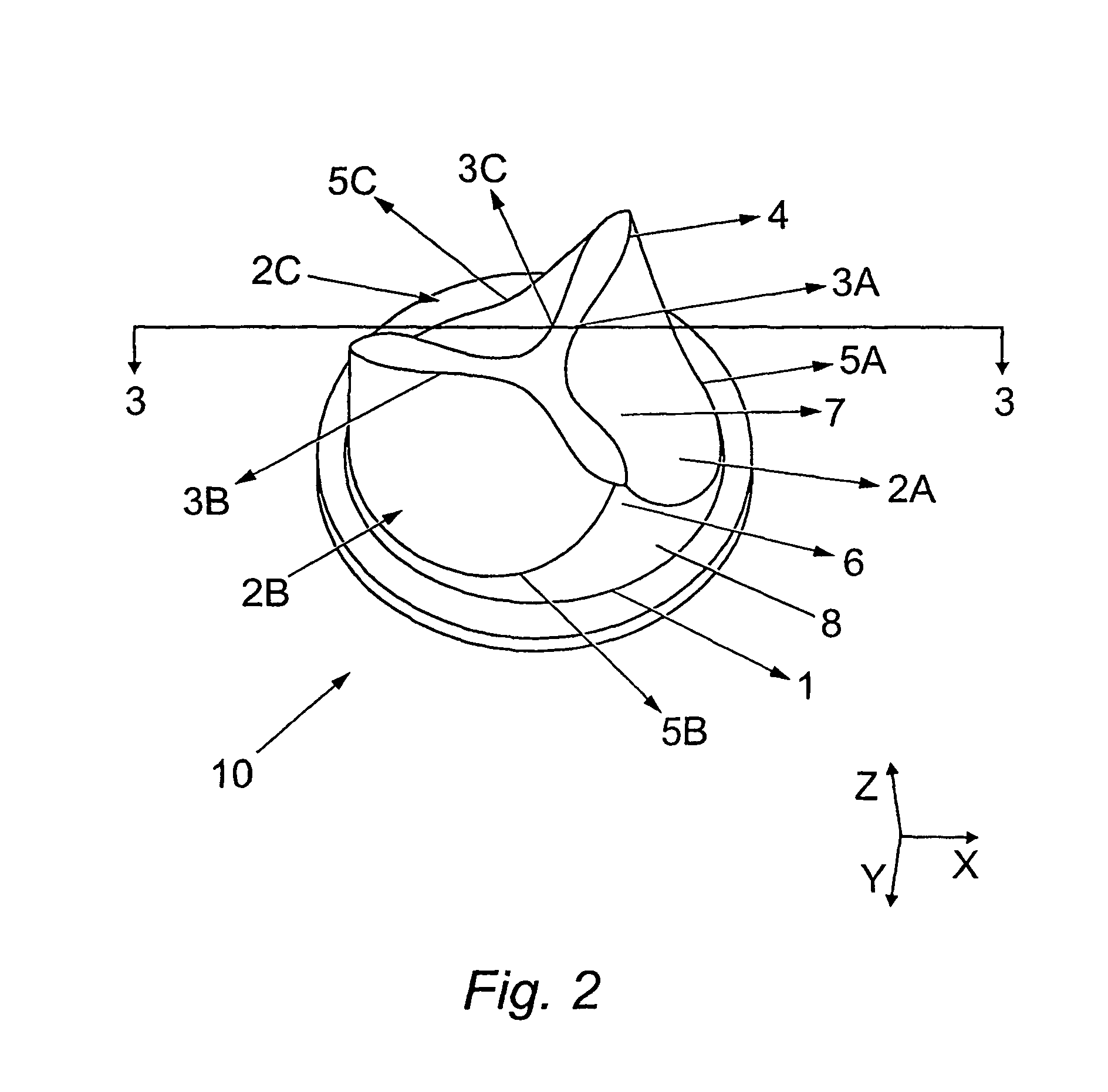Heart valve prosthesis and method of manufacture
a heart valve and prosthesis technology, applied in the field of medical implants, can solve the problems of congenital defects, induced damage, and serious medical consequences of one or more of these valves, and achieve the effects of improving the effective orifice area, reducing the problem of thrombosis, and good washou
- Summary
- Abstract
- Description
- Claims
- Application Information
AI Technical Summary
Benefits of technology
Problems solved by technology
Method used
Image
Examples
example 1
[0138]The parameters described in the preceding sections are assigned the values set forth in Table 2 and are used to manufacture a symmetric valve. The included angle between adjacent leaflet free edges at the valve commissure for this valve is approximately 50°.
[0139]
TABLE 2ParameterValue (mm)Closed positionZcO0ZcO0.0EcN(Z)EcN = 3.0.Z + 50.3EcO22.0EcJ20.0XT(Z)0.0Partially-open positionθ12.7°EoJ50.0ZoO4.0EoO51.8EoN27.7AuResult from iteration procedure finds thatAu varies from 1e−5 at the leaflet base to5.1 at 4 mm from the leaflet base to 3.8 atthe free edge.As(Y)1.0BsResult from iteration procedure finds thatBs varies from 1e−3 at the leaflet base to1.6 at 3 mm from the leaflet base to 0.6 atthe free edge.
[0140]FIG. 12 shows the symmetric valve which is manufactured, using the values outlined in Table 1 and Table 2.
example 2
[0141]The parameters described in the preceding sections are assigned the values set forth in Table 3 and are used to manufacture an asymmetric valve. The included angle between adjacent leaflet free edges at the valve commissure for this valve is approximately 48°.
[0142]
TABLE 3ParameterValue (mm)Closed positionZcO0.0EcN(Z)EcN = 3.0.Z + 48.9EcO18.4EcJ20.0XT(Z)XT(n−1) = 0.97.(XT(n)) where XT(free edge) = 2.1Partially-open positionθ7.1°EoJ50.0ZoO5.0EoO51.5EoN29.0AuResult from iteration procedure finds thatAu varies from 1e−5 at the leaflet base to3.1 at 3 mm from the leaflet base to 2.2 at9 mm from the leaflet base to3.8 at the free edge.As(Y)Bs(Y) = (Y − c) / m where Bs = 1 at leaflet baseand m = 5.04 and c = −15.1 at leaflet freeedge.BsResult from iteration procedure finds thatBs varies from 1e−3 at the leaflet base to1.1 at 6 mm from the leaflet base to 0.4 atthe free edge.
[0143]FIG. 13 shows the valve which is manufactured using the values outlined in Table 1 and Table 3.
[0144]
TABLE...
example 3
[0186]The parameters described in the preceding sections are assigned the values set forth in Table 6 and are used to manufacture an asymmetric valve according to the second embodiment. The included angle between adjacent leaflet free edges at the valve commissure for this valve is approximately 30°.
[0187]
TABLE 6ParameterValue (mm)Closed positionL(Z)Varies from 0.025 mm at the leaflet baseto 21.3 mm at the free edgePartially-open positionθ0°AuResult from iteration procedure finds thatAu varies from 0.0006 at the leaflet baseto 3.8 at 10.7 mm from the leaflet base to3.35 at the free edge.AsAt the free edge of the leaflet, As(Y)varies from 1.5 mm at one side of thescallop to 1.0 mm at the opposite side ofthe scallop.At the base of the leaflet, As(Y) is 1.0 mm.BsResult from iteration procedure finds thatAs varies from 0.0006 at the leaflet baseto 0.839 mm at the free edge.
[0188]FIG. 18 shows the asymmetric valve which is manufactured, using the values outlined in Table 5 and Table 6.
[0...
PUM
| Property | Measurement | Unit |
|---|---|---|
| included angle | aaaaa | aaaaa |
| included angle | aaaaa | aaaaa |
| included angle | aaaaa | aaaaa |
Abstract
Description
Claims
Application Information
 Login to View More
Login to View More - R&D
- Intellectual Property
- Life Sciences
- Materials
- Tech Scout
- Unparalleled Data Quality
- Higher Quality Content
- 60% Fewer Hallucinations
Browse by: Latest US Patents, China's latest patents, Technical Efficacy Thesaurus, Application Domain, Technology Topic, Popular Technical Reports.
© 2025 PatSnap. All rights reserved.Legal|Privacy policy|Modern Slavery Act Transparency Statement|Sitemap|About US| Contact US: help@patsnap.com



